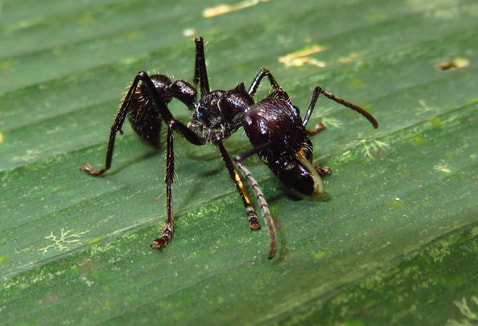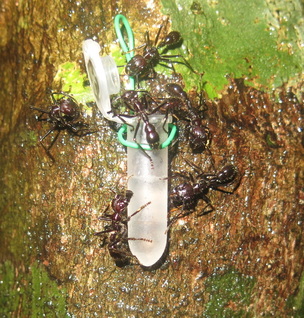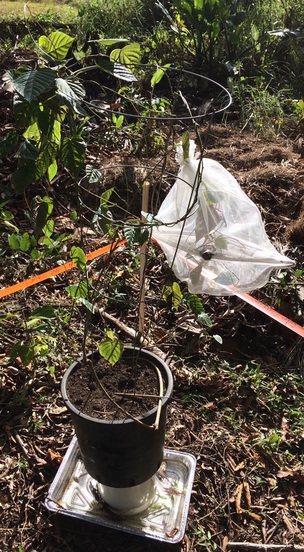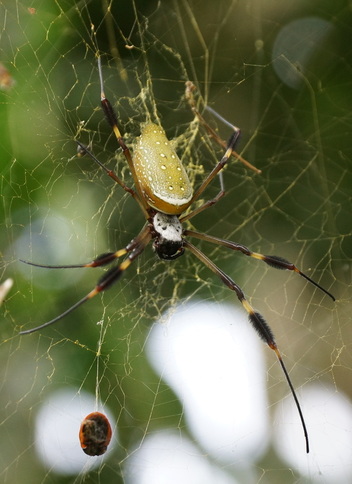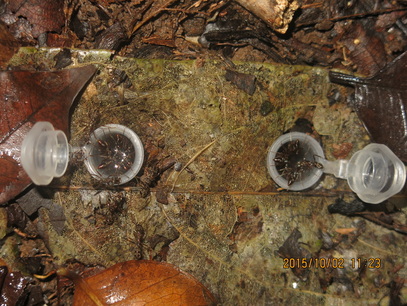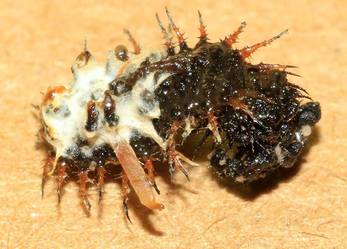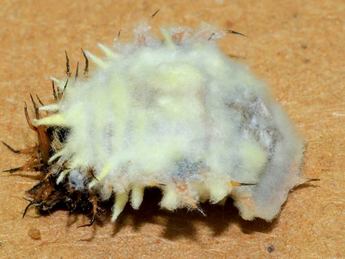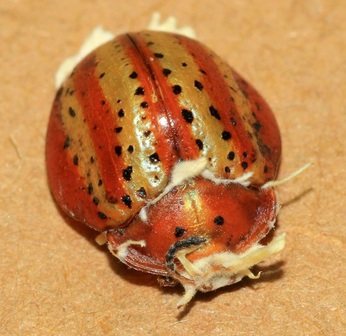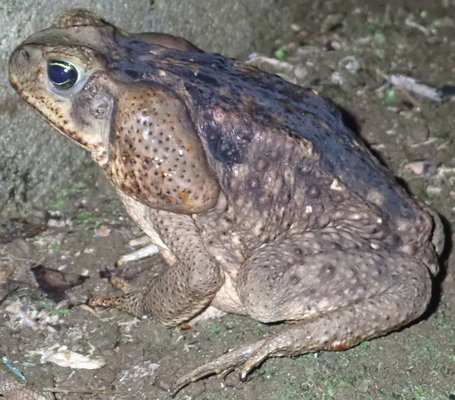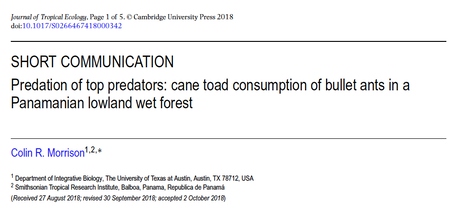Natural Enemy Ecology
Natural enemies come in many functional forms. Predators, parasitoids, and parasites. They are a major ecological force and the context of their interaction with prey and/or hosts can
differ greatly over spatial and temporal scales.
differ greatly over spatial and temporal scales.
|
Paraponera clavata worker preying on Aslamidium semicircularum (Cassidinae). Photo by Peter Marting.
|
Paraponera clavata workers foraging on sugar water.
|
|
My research into the nature of plant-insect interactions constantly compels me to question the role that natural enemies play in this relationship.
This appreciation for the importance of natural enemy ecology has driven me to begin ask a number of new questions about the relative importance of antagonistic interactions drive species interactions. Tortoise beetle - Parasitoid experiment set up
Parque Nacional Soberania, Panama. The consequences of natural enemy ecology have profound impacts on all ecosystems, natural and managed. Organisms face a constant struggle to eat and avoid being eaten.
These interactions can switch directions, become symbiotic, commensal. Prey may even turn the tables and become the enemies of their former adversaries. Nephila clavipes with captured C. alternans.
Photo by Lynette Strickland. |
.Ectatomma ruidum workers foraging on beetle extracts in choice test
We are beginning a new study of how
tortoise beetle host plant usage correlates with infection and mortality rates by entomopathogenic Fusarium proliferatum fungi. .C. alternans larva (top), pupa (middle) and adult (bottom)
infected with F. proliferatum fungi. Photos by Austin Garrido. |
I want to take my studies of natural enemy ecology into new directions addressing questions about interactions between vertebrate predators that prey on predatory arthropods.
